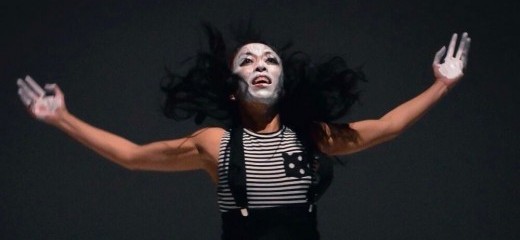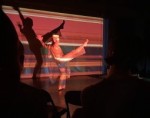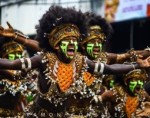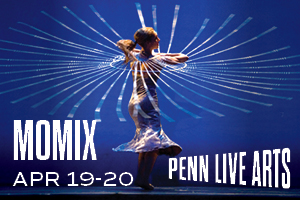
Unpacking the buzzword “Decolonization”
by Annielille “Ani” Gavino
"Until the lion learns how to write, every story will glorify the hunter" -African proverb
Which brilliant person came up with this quote? We may never know. It seems like after the lion has taken the task of writing something ingenious, he/she/they will forever be known as simply the “African proverb.”
This lack of citation and erasure resonates deeply for me, an immigrant from the Philippines whose history encompasses 400 years of Spanish colonization followed by U.S. imperialism. So much of what was ours was forcibly taken, including the right to our own name. The Philippines is named after its own colonizer, King Philip of Spain--a daily reminder of our oppressor.
One day, my first-generation Filipino-American daughter, Malaya, came home from school stating, “Magellan was the first man to circumnavigate the world.” I retold the story, reminding Malaya that "on Magellan's journey halfway across the globe, he was killed by Lapu Lapu, an indigenous chief from the island of Mactan." Although this is the history I learned growing up in the Philippines, it occurred to me that Western hegemony will never acknowledge Lapu Lapu's name. Thus, I have to do the tedious parenting act of performing additional tasks of "undoing" the colonized history imposed on her.
Whether we like it or not, our bodies hold histories of conflict between oppressor and oppressed. The battleground lies within education, media, government, politics, and, yes, the arts. And thus, decolonization begins with the acknowledgement that everything around us has been implicated by colonialism. So much has to be undone.
As a young girl, I once believed that the U.S. and Spain saved us from a savage, uncivilized way of life:
"Take up the White Man's burden—
Send forth the best ye breed—
Go bind your sons to exile
to serve your captives' need;
To wait in heavy harness,
On fluttered folk and wild—
Your new-caught, sullen peoples,
Half-devil and half-child…"
Above is the beginning of White Man’s Burden by Rudyard Kipling, a poem that ignited the Philippine -U.S. war, one of the longest wars in U.S. history, resulting with the genocide of my people. The anti-Asian rhetoric woven throughout this poem doesn't fall far from the eugenics movement within the U.S, promoting ideas of racial hierarchy through a fake science that valued white bodies above all else. This rhetoric was made to historically justify the enslavement and oppression of Black and Brown people, and post-emancipation would still be used to assign color lines and borders via segregation. Adjacent to Jim Crow laws were the Immigration policies e.g., the Naturalization Act, Asian Exclusion Act, Patriot Act and more.
In the early 1900s, the Gold Fever brought thousands of Chinese migrants to this country. After a long journey across the Pacific, having left land, family, and community, Chinese migrants came to the U.S. tricked by the false narrative of the “American Dream”: the same illusion I bought into. Having only purchased a one-way ticket, often using all the money to their name, many found themselves stranded—trapped— in a new land, working for white America. With the most minimal wages, enough to justify as “non-slavery,” many could not save enough money to go back home.
The more I reflect on this, the more I realize that the artworld is no different. I came to this country believing in the myth of the American Dream but to this day, I find myself navigating the role of migrant body laboring for white systems. Art is a vessel for creative expression, a space of freedom. Yet, here I am, a dancer, dancing to liberate myself from dance itself. The borders are clear, and so are the bodies preferred. And I share this as an active dance professional of over twenty-five years, tenaciously fighting for mobility in the American dance arena.
Allow me to take you down memory lane; it was Summer of 2000 in New York City, my first summer in the U.S. I was walking the streets of the Upper West Side, strolling down Columbus Avenue from 61st and Amsterdam to 72nd and Broadway. I wanted to be like every American dancer. I observed them as they went out to get smokes or a cup of coffee, noting that dancers walked “turned-out,” publicly announcing to the world that they are dancers.
A previous movement instructor described me as being a good mover but not a technician. "Technical dancers equate to being balletic." So, I took extra ballet classes every day. The Ailey school’s curriculum further affirmed this with courses that centered ballet, Horton, and Graham as prerequisites; Dunham and West African were categorized as electives. The school director compared a long dancer body to a pencil while a non-dancer body was compared to a stubbly chunky eraser. An ideal dancer was described as “a long, light and weightless body...long legs and short torso... long neck...clavicle showing… a pointed foot... hyper-flexibility.” This belief was reaffirmed by statements by peers such as, "Gurl you got leg! You are fierce!" Consequently, I developed an eating disorder and my young, impressionable mind forgot all about dancing with my spirit. There is no denying that the dance world is so much richer because of Mr. Ailey’s vision and legacy. Many of us Black and Brown dancers, including myself, fulfilled fruitful performance careers because of the Ailey institution. However, I believe there is still work to be done in terms of dismantling internalized whiteness within our own “safe spaces.”
Dance is polarized in the U.S.: theater vs. dance, uptown dance vs. downtown dance, concert dance vs. commercial dance, world dance vs. contemporary dance, high art vs. low brow community dance. Based on my experiences, mobilization for Asian choreographers is limited in the U.S. unless we comply with white language. Thus, recently working with Ananya Chatterjea—a brown Asian immigrant like myself who claims her stake in the fabric of American dance history—has been a liberating experience. Chatterjea leads Ananya Dance Theater (ADT), a collective voice of Black and Brown femmes working towards social justice. Based in Minnesota, ADT de-centers dance away from its so-called mecca, New York City. Another way that Chatterjea intentionally decenters U.S. dance traditions, and therefore whiteness, is that she uses her own movement language of Yorchha within her practice.
During my initial training with ADT, I was introduced to positions and movements that have existed since the 2nd century B.C. These movements can be traced back to ancient temple writings. Through my training with ADT, I am beginning to decenter the white gaze that has so often attempted to control my Filipino body. Part of this then becomes about interrogating how American modern dance has appropriated the embodiment of these movements and traditions. Through working with ADT, I learned to consciously decolonize the use of the term, classical. Dance is constantly evolving, and to pin a form as “classic” is a form of hierarchy within dance. Chatterjea creates her own language by merging Odissi and Chhau in the formation of Yorchha. In my study of Yorchha, I observed similarities between Lester Horton’s lateral stretches to the bend of the torso initiated from the waist called Ati Banggas. The curvature of the spine appeared aesthetically and theoretically parallel to the Graham contractions. Thus, I realize that my favorite lateral exercises and spirals around the back, first learned within my Modern dance training, were fruits of appropriation, propagated with a different name. Those who borrowed its seeds left without a promise of a return, planting the Denishawn legacy and its Pillow as the epitome of American modern dance.
The appropriation of Eastern practices has a long history of the untold. Similarly to the comparison of the “African proverb” I began with, the erasure of Eastern practices and voices is intentional within the appropriation of dance. For example, Chi awareness, a practice first introduced to me by Kun-Yang Lin/Dancers’ director Kun-Yang Lin, explores energy work that involves accessing somatic sensory sensations. We float, shake, and summon energy and how it is held within our bodies. This practice is not new, and yet, similar exercises are associated and popularized in the widely sought-out Gaga technique classes.
So how do I decolonize? I acknowledge that I am conditioned by colonialism. I reclaim histories by writing about them as I am doing now. I affirm the makers of dance who strive for representation and equity. I choose my mentors. I read. I carefully choose the movies I watch. I make work representing my heritage. And I try my best to choose my language.
Here I reflect on Audre Lorde's quote and essay, “The Master’s Tools Will Never Dismantle the Master’s House.” To dismantle systemic institutions we have to first understand them as a structure, but also understand the tools used to build them as something to be dismantled as well. I am galvanized to dismantle one of the many tools that has built the master's house and continues to uplift it: language.
Explorer vs. trespasser
Emancipation vs. Terror
contributions vs. erasure
Separate but equal vs. legal apartheid
Division vs. boundaries
1st position in ballet vs. Biparitamukhapada
As Kipling's poem reminds us, language has started wars resulting in bloodshed and whole cultures being erased or silenced. And the continued use of language to uphold systemic racism within the dance field is just as violent. White supremacist language is the statement, "ballet is the foundation of dance and technique equates ballet." By continuing to promote one language or history as more important than another, we fall into the same inequitable practices evident during the eugenics era. By affirming only those written in the Western canon, many of our BIPOC aspiring dancers are left without a hero resembling themselves, and are once again reminded that we, especially Black or darker skinned Brown bodies, don’t matter.
Decolonization is a tedious act of undoing- an ongoing protest. But the moment we ignore the impact of colonization within dance—within all that we do—we fall into hopes of gold mines where there is none. So much intentional work needs to be done to decolonize dance: language is just one of the tools to be dismantled. Which one will you break?
Kaya ako ay sumusulat para malaman nating lahat ang katotohanan. Paano ito ginagamit sa pagsulat ng nakaraan? Para sa aking mga kababayan, samahan ninyo ako sa aking resistensya. Tayo na at magsulat ng sariling kuwento para sa ating mga kapwa at kabataan.
By Anito Gavino
May 24, 2021






.png)


